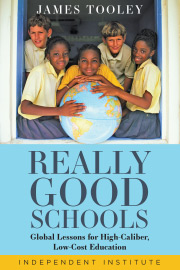“Comparable Worth” Harms Women and Minorities
With much fanfare, the first bill signed into law by President Barack Obama is the Lilly Ledbetter Fair Pay Act, which proponents believe will end pay discrimination against working women and minorities. The Act reinstates by congressional legislation the decision of a lower case in Alabama against Goodyear Tire and Rubber Company which was overturned by the U.S. Supreme Court. This law would allow pay discrimination lawsuits to proceed years or even decades after alleged discrimination took place, so long as the plaintiff has received any compensation affected by it in the preceding 180 days. As a result, the law claims to protect people who years after the fact might decide that a labor agreement they once voluntarily entered into was unacceptable after all, rendering such labor contracts perilous at best.
However, economic and legal studies of such matters show that government mandated wage rates actually harm workers, including women, by undermining the flexibility of labor markets and contracts and reducing employment opportunities. For example, in the Independent Institute book, Liberty for Women, Ellen Frankel Paul (Co-Director of the Social Philosophy and Policy Center at Bowling Green State University) shows why “comparable worth” laws encourage women to stay in lower-paying jobs that reinforce stereotypes and intensify competition for traditionally “female” jobs.
Similarly, economist June O’Neill (Director, Center for the Study of Business & Government at Baruch College; former Director of the Office of Policy and Research at the U.S. Commission on Civil Rights) shows why comparable worth (or “pay equity”) is misguided for numerous reasons, but to simply summarize:
The imposition of comparable worth would likely raise pay in traditionally female jobs; appointing persons favorable to the concept to conduct the job evaluation would all but guarantee that result. But because the higher pay in female jobs would raise costs, employers would reduce the number of such jobs, by automating or by reducing the scale of operations, for example. Workers with the most skills would be more likely to keep their jobs, while those without the skills or experience to merit the higher pay would be let go. The ironic result is that fewer workers would be employed in traditionally female jobs. While the higher pay might induce more workers to seek these jobs, the reduced demand could not accommodate them. Less skilled women would lose out to more skilled women and, quite possibly, to men who would be attracted by the higher pay. What’s more, some employers would respond to the higher wages by providing fewer of the nonmonetary benefits (like flexible hours) that help accommodate the needs of someone who dovetails home responsibilities and a job.
The few instances where comparable worth has been implemented in the United States tend to support those conclusions. Thus far, comparable worth has been almost entirely confined to the civil service systems of about twenty state governments and a number of local governments. When Washington State implemented comparable worth, according to one study, the share of state government employment fell in those jobs that received comparable worth pay adjustments. The largest relative declines in employment were in the occupations that received the largest comparable worth pay boosts. Other studies have found that Minnesota’s well-known comparable worth plan has reduced employment growth in female jobs relative to male jobs.
In examining the legal dimensions of “comparable worth,” Roger Clegg (former Deputy Assistant Attorney General) has shown that:
[W]hat comparable worth is about is the government requiring that a man doing one job and a woman doing another, different job be paid the same amount, on the grounds that, in someone’s opinion, the two different jobs have “comparable worth.” It would, as the Supreme Court put it in County of Washington v. Gunther, allow plaintiffs to “claim increased compensation on the basis of a comparison of the intrinsic worth or difficulty of their job with that of other jobs in the same organization or community.” There is a fundamental problem with this approach: it is flatly inconsistent with perhaps the lesson of the twentieth century, namely, that the free market is infinitely better at setting prices and allocating society’s scarce goods and resources than is a centralized bureaucracy. Deciding what something “should” cost—including wage and salary levels—is not something that a few mandarins, no matter how wise and conscientious, can do.
There are simply too many variables to take into account. . . . [C]omparable worth will cause unemployment for some positions and unfairly depress wages in others-an odd result for “progressive” legislation.
Such economic and legal insights have been presented for years by numerous people such as Linda Chavez (former Director of the U.S. Commission on Civil Rights), but “comparable worth” advocates have yet to learn, and many working women and minorities, as well as employers and consumers, will now unwittingly suffer the consequences.
HT to Alex Tabarrok













